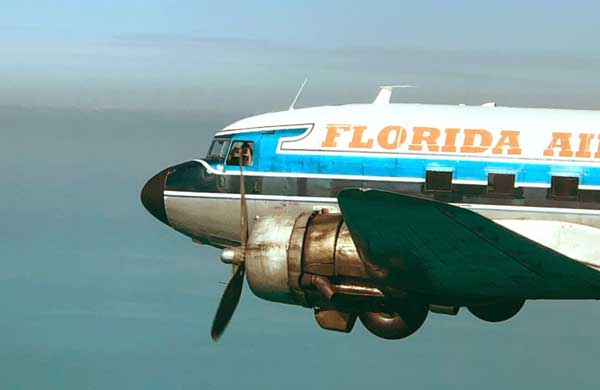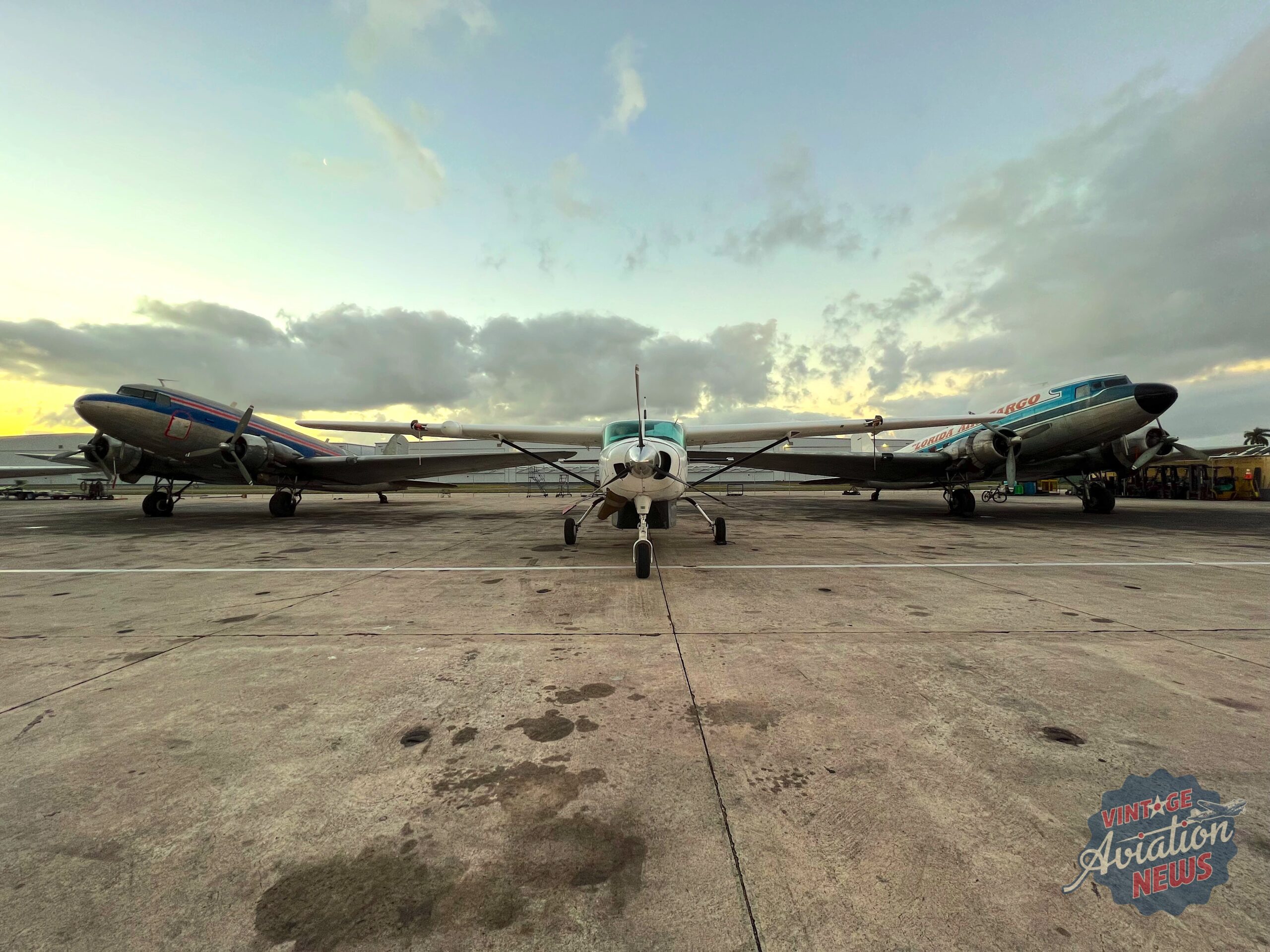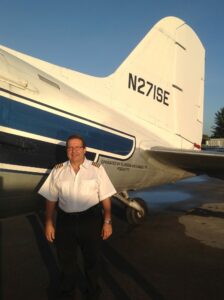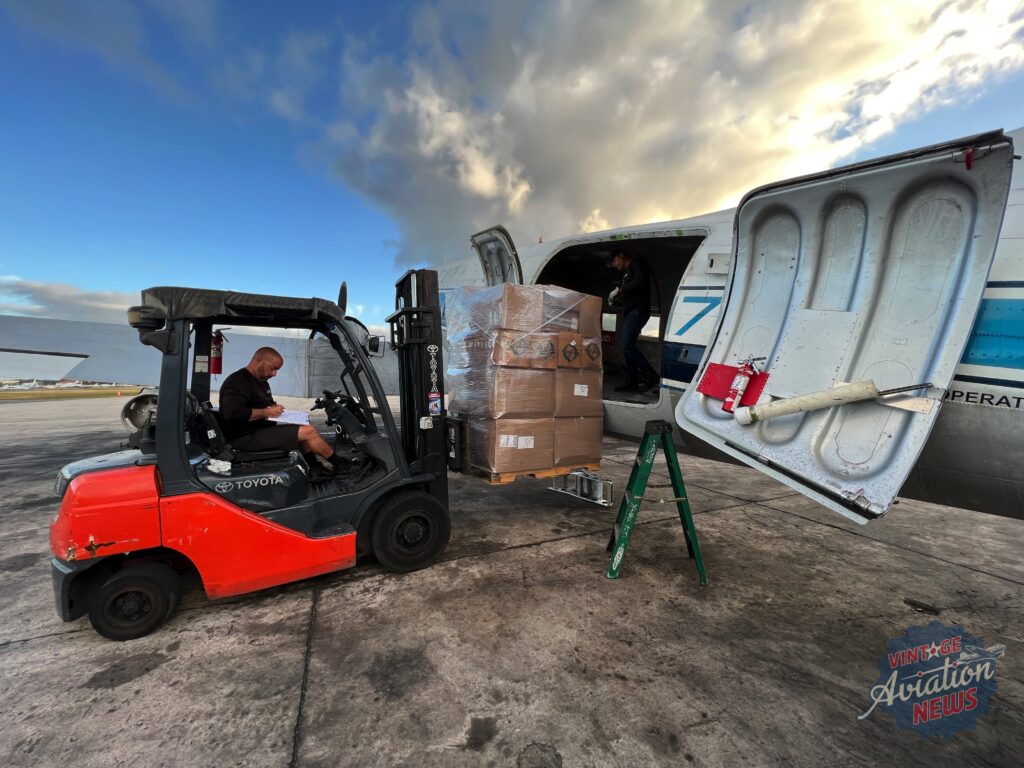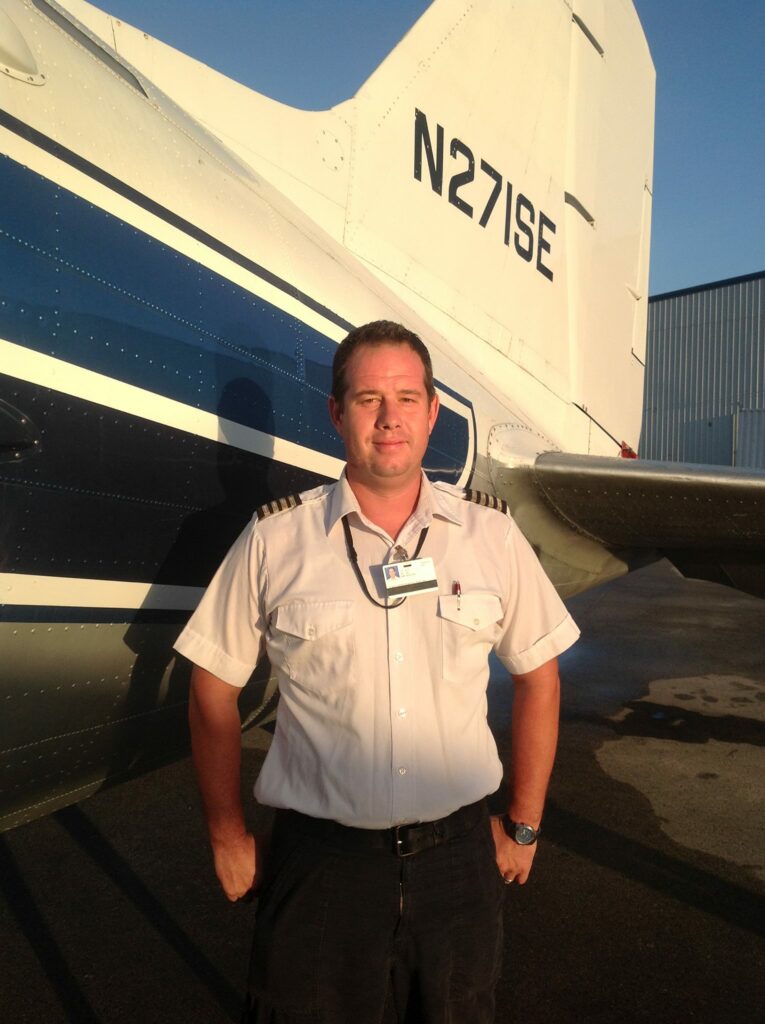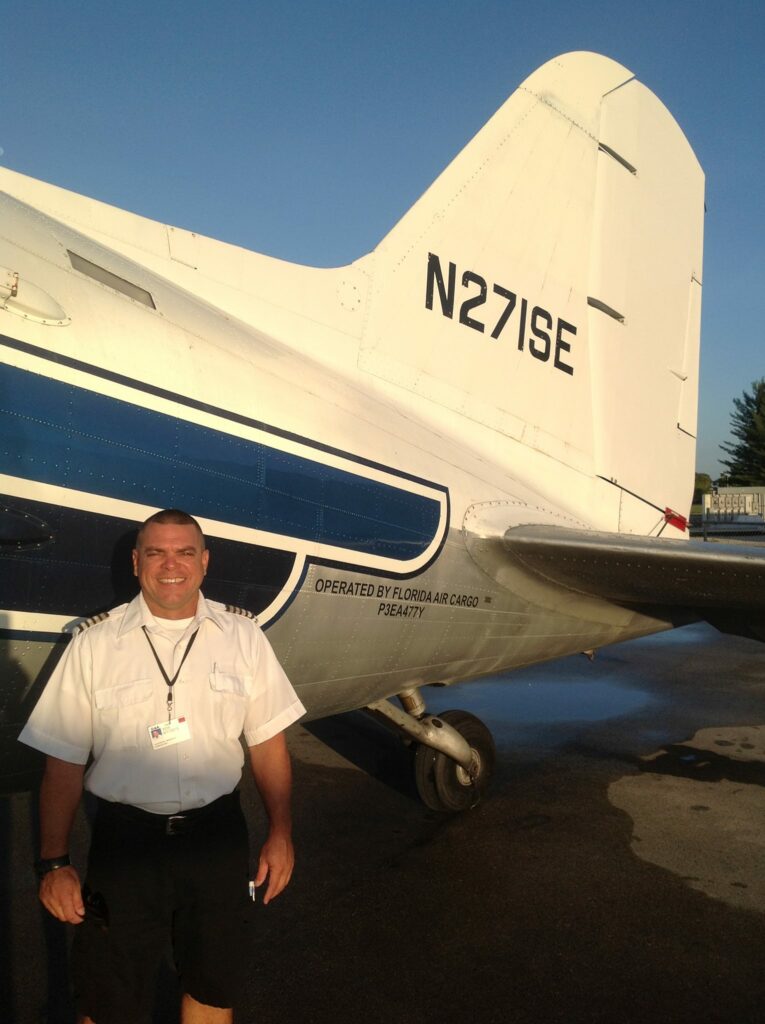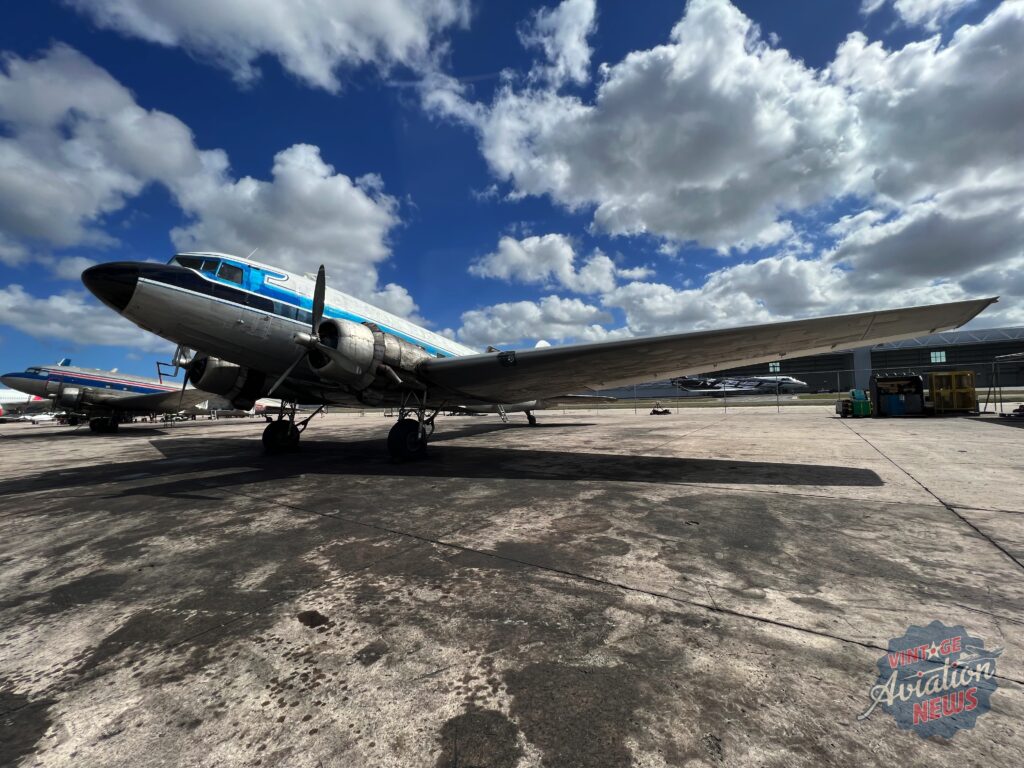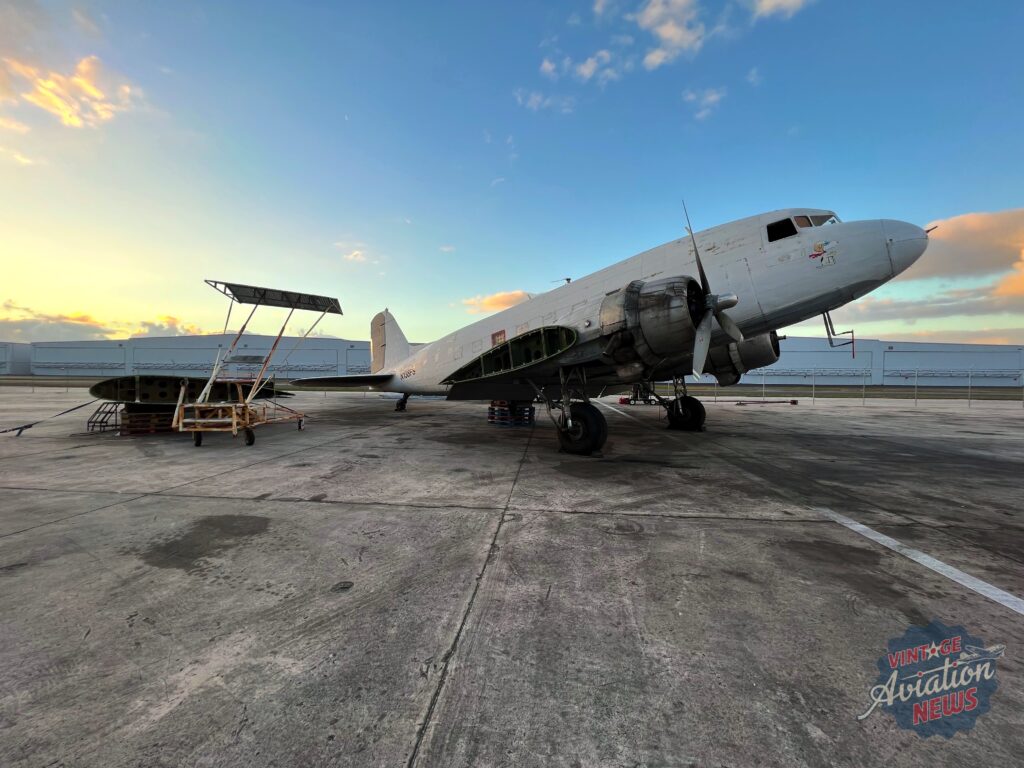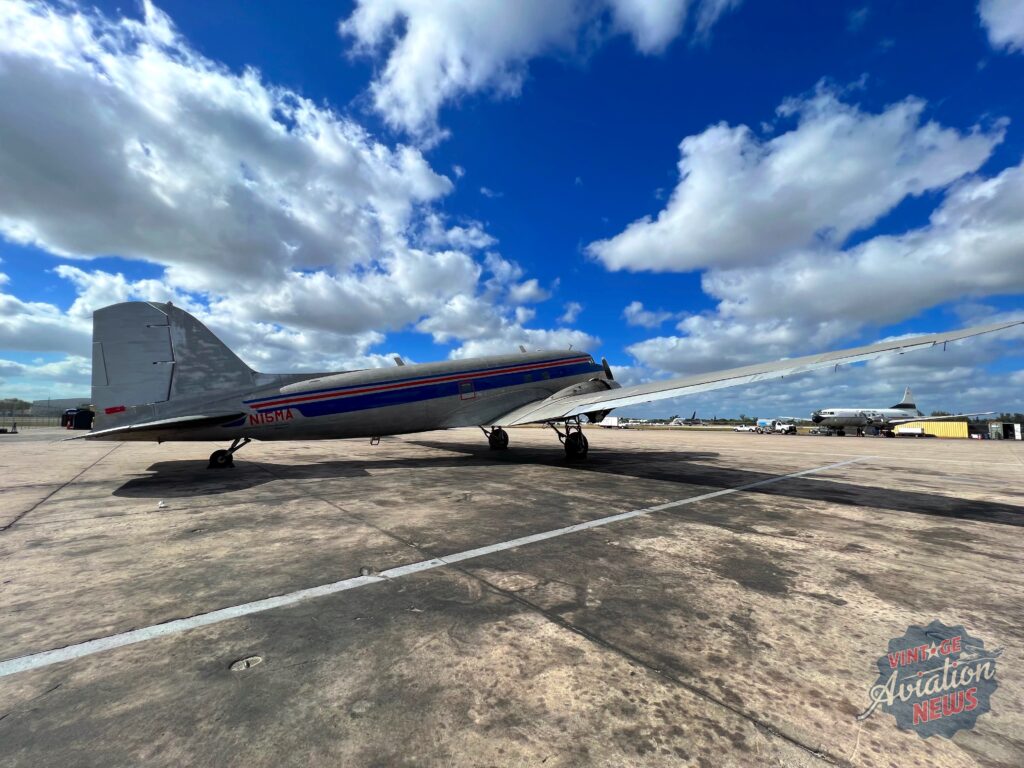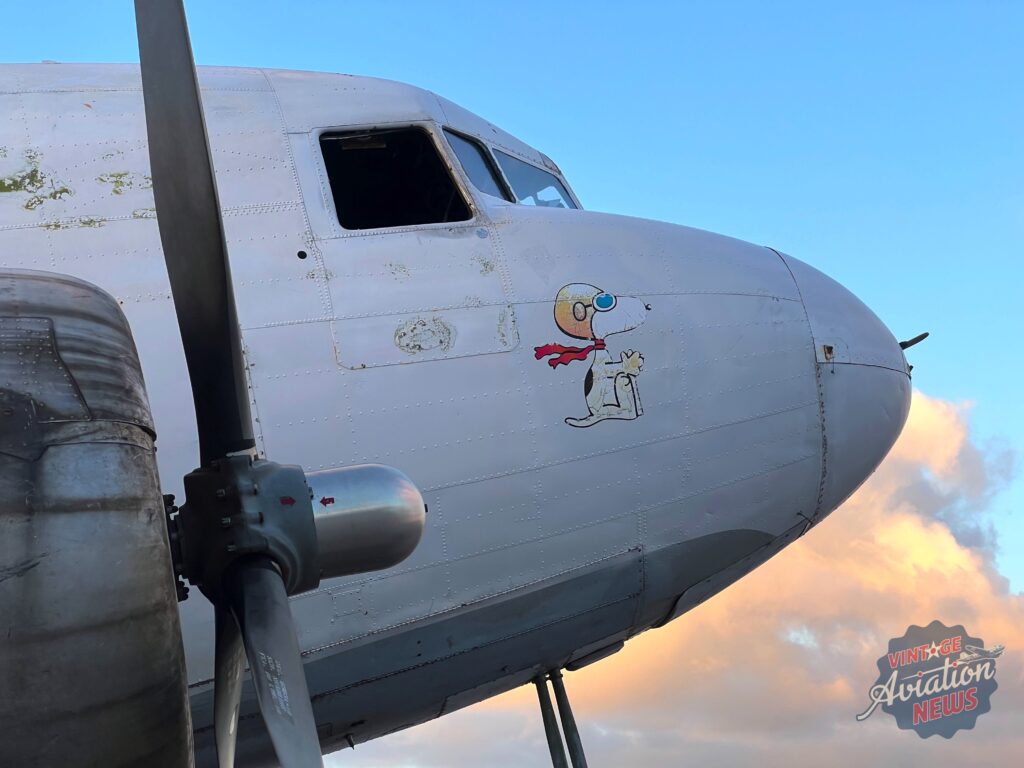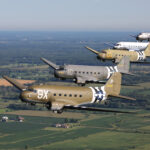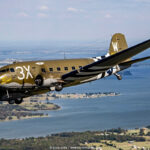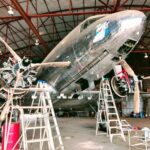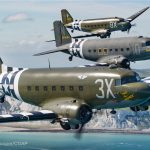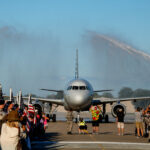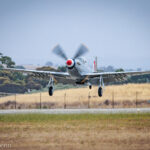by Moreno Aguiari & Richard Mallory Allnutt
If there were ever a need to prove the longevity and resilience of the Douglas DC-3/C-47, one could easily find ample proof at Florida Air Cargo, which operates three examples on a commercial basis – almost ninety years after the type’s initial flight on December 17, 1935!
Florida Air Cargo is one of three of North America’s premier commercial air cargo ( the other two being Buffalo Airways and Desert Air Alaska) services still flying D-Day veteran Douglas C-47s. During a recent trip to Miami, Florida, we stopped by their facility to check out their operation and have a conversation with the company’s President and CEO, Sergio R. Alen.
Sergio has lived and breathed aviation since childhood. His professional aviation career began in 1978 with the Miami Aviation Corporation, where he worked as a certified Airframe and Powerplant (A&P) mechanic. This work initially involved performing annual Inspections, 100-hour checks, repairs, and alterations etc., mostly on general aviation type aircraft. Since those days he has placed his capable hands towards pretty much every aspect of aviation maintenance, from modifying Boeing 707s, to performing A, B, and C checks, Quality Control, Progressive Inspection Programs, general management, and even acting as a Director of Maintenance for several companies over a dozen year period or so. Sergio now has in excess of three decades of deep-rooted aviation experience – abilities and certifications which have combined to help him raise Florida Air Cargo to become one of Florida’s top air freight companies.
Florida Air Cargo currently has twelve full-time employees and operates three C-47s and two Cessna 208 Caravans on regular Monday through Friday cargo flights to the Bahamas and other Caribbean islands. While Nassau, the Bahamian capital, is the destination for most of these flights, the company’s Part 135 certificate permits them to operate throughout the Caribbean, Central America, South America, and the United States. Florida Air Cargo primarily works with freight-forwarding companies; they do not receive or manage loads, instead specializing in the provision of full-airplane charter services to regular customers.
When asked why his company chose to fly the C-47 as a commercial cargo transport, Sergio Alen responded simply: “Because I haven’t yet found a modern airplane that can carry the amount of payload (7,000lbs) for the cost of operation of the C-47. Furthermore, the airplane allows us to operate from short fields and can carry a lot of fuel. It simply makes me money!”
Sergio served as Florida Air Cargo’s Director of Maintenance for many years before he acquired the company and its Part 135 certificate in 2012 when the original owner closed up shop. He leased one of the company’s former Cessna Caravans and began operations under the same name, assembling a team of professionals to work alongside him; a number of these individuals have now been with the company for twenty years.
Florida Air Cargo’s Chief Pilot is Captain Alexander Mederos who has over 6,000 flight hours, more than half of which involve DC-3s. Alex joined the company in 2008 and has spent most of his time aloft in Caribbean airspace. In addition to his duties as chief pilot, Mederos also leads the company’s ground and flight instruction programs for both the Cessna Caravan and DC-3. The DC-3’s longevity with the company is due to the resolve and dedication of its pilots along with their Director of Operations, Keith Kearns. Kearns is one of those rare aviators who has intimate knowledge and experience regarding how to fix what he flies; he is both a licensed pilot and A&P mechanic; he has worked for Florida Air Cargo since its inception in 2003.
For we aviation enthusiasts, the most fascinating aspect of Florida Air Cargo’s operation likely involves the provenance of the three ‘Gooney Birds’ in their fleet. Thanks to the excellent work of the historians at DDay-Overlord.com and DC-3/C-47 historian Michael Prophet, we now know that two of these cargo planes are D-Day Veterans and that the third served with Britain’s Royal Air Force.
N271SE: C-47B-29-DK 43-49860/Dakota Mk.IV KN250
If an airplane could sweat, it’s skin might resemble One-Sierra-Echo’s. The aircraft sports the unmistakable working plane’s patina, the result of decades of effort. One-Sierra-Echo, is the youngest of Florida Air Cargo’s C-47s, having rolled off the Douglas Aircraft production line in Tulsa, Oklahoma as construction number 15676 on January 10th, 1945. Initially designated a C-47B-29-DK for the U.S. Army Air Forces as 43-49860, the aircraft soon transferred to Britain’s Royal Air Force (RAF), which took it on strength in Montreal, Quebec as KN250 on March 3rd, 1945. The aircraft first joined No.300 Wing (which soon became No.300 Group) in Australia to support RAF operations in the South Pacific, serving with No.243 Squadron during that time. The aircraft returned to the UK with No.238 Squadron on April 11th, 1946. The aircraft was with No.1 Parachute Training School by November 5th, 1947, moving to No.27 Squadron on February 2nd, 1950. Apparently, the aircraft suffered an accident on April 20th, 1950, crash-landing near Netheravon. The RAF did not repair the aircraft for flight, relegating it to a maintenance airframe, with serial 6763M, at RAF Netheravon by June 7th, 1950. Following demob, a British civilian airline, Transair Ltd., acquired the Dakota. They made the necessary repairs and placed KN250 on the British civil register as G-APBC on April 25th, 1957. The Dakota then joined Derby Aviation Ltd. on May 2nd, 1958, gaining the nickname Derwent Dale, moving to British Midland Airways on October 1st, 1964, South West Aviation Co. on May 1st, 1968, Morton Air Services Ltd. that September, then Air Freight Ltd at Lydd on March 27th, 1973. Skyways Cargo then operated the aircraft between May 12th, 1975 and 1980. The Dakota then returned to the USA in October, 1981, joining Missionary Flights International in West Palm Beach, Florida as N26932, then N300MF soon after. Florida Air Cargo acquired the Dakota in June, 2012, reregistering her as N273SE at that time.
N138FS: C-47A-45DL 42-24105
This aircraft rolled off the assembly line at the Douglas Aircraft factory in Long Beach, California as construction number 9967 on July 30th, 1943. The U.S Army Air Forces accepted the C-47 as serial number 42-24105, and initially assigned it to the 8th Air Force. However, it soon joined other C-47s with the 75th Troop Carrier Squadron (TCS) in the 435th Troop Carrier Group (TCG), 9th Air Force. The 75th TCS worked up for overseas service at Bowman Field near Louisville, Kentucky. In October, 1943, the 75th TCS departed for Britain, joining up with the 435th TCG’s three other squadrons (76th, 77th and 78th TCS) at Royal Air Force (RAF) Station Langar in Nottinghamshire, England. In late January, the 435th TCG soon moved to RAF Welford near London to begin preparing for the Normandy Invasion. A little before midnight on June 5th, 1944, the 435th TCG took off from RAF Welford carrying paratroopers from the 3rd Battalion, 501st Parachute Infantry Regiment of the 101st Airborne Division and headed for the Normandy coast in France. They formed Serial 13 in ‘Mission Albany’, the opening salvo for Operation Neptune – more commonly known today as the D-Day Invasion. With Lt Channing LeClaire Delaplane of Winchester, Virginia at the controls, 42-24105 flew as Chalk #42 in the starboard vic formation at the tail end of Serial 13. They released their paratroopers over Drop Zone C near Sainte-Mère-Église at roughly 1:20am on June 6th, 1944. The 75th TCS performed many subsequent missions over Europe following D-Day, although it is presently uncertain which activities 42-24105 took part in. Following WWII, the C-47 returned to the United States. Although its post-war military history is presently uncertain, the aircraft ended up on the U.S. civil registry with Air Freight Inc. as N51617 in May, 1973. The cargo plane, converted to DC-3C configuration, moved through a slew of other operators (and registration serials) before ending up with Florida Air Cargo in 2013, registered as N138FS. It is presently undergoing an intensive maintenance regimen, as the image attests.
N15MA: C-47A-70-DL 42-100823
The Douglas Aircraft Company built this C-47A-70-DL as c/n 19286 at their factory in Long Beach, California, delivering it to the U.S. Army Air Forces as 42-100823 on December 20th, 1943. The aircraft soon departed for the UK, arriving with the 91st TCS of the 439th TCG at RAF Station Balderton in Nottinghamshire on March 6th, 1944. The unit soon moved to the now famous RAF Uppottery in Devonshire, the same base depicted in the 1992 Stephen Ambrose book (and 2001 HBO mini-series) Band of Brothers. While it is unknown to the authors whether 42-100823 carried anyone from ‘Easy Company’ aloft, the aircraft did take part in the Normandy Invasion, towing a WACO CG-4A Hadrian glider with troops from the 82nd Airborne Division to Landing Zone W near Sainte-Mère-Église on D-Day +1 as part of Serial 36. Lt. Fred Culp, Jr. flew as the pilot on this mission. Ironically, this aircraft also bore the same temporary designator, Chalk #42, as Florida Air Cargo’s other D-Day veteran C-47! 42-100823 continued to fly operations over Europe for the remainder of WWII. Oddly, the aircraft joined the civil registry in Czechoslovakia as OK-WDP in 1946, flying for ČSA (Československé státní aerolinie/Czechoslovak State Airlines) until 1960. The aircraft then returned to military service with the French Air Force (Armée de l’Air) as F-SCDB. After two further registration changes in France, the aircraft went on the U.S. civil registry for the first time as N18265. By June, 1979 the aircraft gained its present registration N15MA. Much like N138FS, the aircraft passed through the hands of numerous cargo operators before ending up with Florida Air Cargo circa 1999.
The DC-3 is inexpensive, to operate, and offers a remarkably robust airframe capable of adapting to many uses, whether it be serving remote landing strips in the Antarctic on skis, flying freight and passengers in the Andes Mountains of South America, dispersing oil spills in the North Sea with air-dropped detergent, fighting mosquitos in Florida the type still serves its operators like no other aircraft in history.
This iconic airplane made air travel popular and airline profits possible, it is universally recognized as the greatest airplane of its time. Some would argue that it is the greatest of all time. We believe it is.







